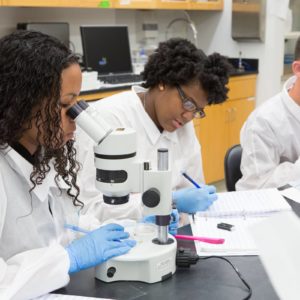what to include in the introduction of a lab report

Whether you are in lab for general chemistry, contained work, or senior thesis, most all lab experiments will be followed up with a lab report or paper. Although information technology should be relatively easy to write nearly an experiment you completed, this is oftentimes the most difficult part of lab piece of work, especially when the results are unexpected. In this post, I will outline the components of a lab written report while offer tips on how to write 1.
Empathize Your Experiments Thoroughly
Before yous begin writing your typhoon, it is of import that you empathize your experiment, equally this will help you decide what to include in your paper. When I wrote my first organic chemistry lab report, I rushed to begin answering the give-and-take questions only to realize halfway through that I had a major conceptual error. Because of this, I had to revise nearly of what I had written so far, which cost me a lot of time. Know what the purpose of the lab is, formulate the hypothesis, and begin to think about the results y'all are expecting. At this betoken, it is helpful to check in with your Lab TA, mentor, or main investigator (PI) to ensure that you thoroughly understand your projection.
Abstruse
The abstruse of your lab report will generally consist of a short summary of your unabridged study, typically in the same guild as your report. Although this is the first section of your lab report, this should be the last section you write. Rather than trying to follow your entire study based on your abstract, it is easier if you write your report first before trying to summarize it.
Introduction and Background
The introduction and background of your study should establish the purpose of your experiment (what principles you are examining), your hypothesis (what y'all await to encounter and why), and relevant findings from others in the field. You have likely done extensive reading about the project from textbooks, lecture notes, or scholarly articles. But every bit you write, only include background data that is relevant to your specific experiments. For case, over the summer when I was even so learning near metabolic engineering science and its office in yeast cells, I read several articles detailing this process. However, a lot of this data was a very broad introduction to the field and non directly related to my project, and then I decided not to include about of information technology.
Methods
This section of the lab report should not comprise a pace-by-stride procedure of your experiments, but rather plenty details should be included so that someone else can understand and replicate what you did. From this department, the reader should understand how y'all tested your hypothesis and why you lot chose that method. Explain the different parts of your project, the variables being tested, and controls in your experiments. This section will validate the data presented by confirming that variables are being tested in a proper way.
Results
You cannot change the data you collect from your experiments; thus the results section volition be written for you. Your job is to nowadays these results in appropriate tables and charts. Depending on the length of your project, you may accept months of information from experiments or only a 3-60 minutes lab period worth of results. For instance, for in-course lab reports, there is commonly only one major experiment, so I include virtually of the data I collect in my lab report. Just for longer projects such as summer internships, there are various preliminary experiments throughout, so I select the data to include. Although you cannot change the data, you must choose what is relevant to include in your report. Make up one's mind what is included in your study based on the goals and purpose of your project.
Discussion and Decision
In this section, you should analyze your results and relate your data back to your hypothesis. Yous should mention whether the results you obtained matched what was expected and the conclusions that can exist drawn from this. For this section, you should talk about your data and conclusions with your lab mentors or TAs before y'all begin writing. Every bit I mentioned above, by consulting with your mentors, you lot will avoid making big conceptual mistake that may accept a long time to address.
—
There is no correct order for how to write a report, but information technology is more often than not easier to write some sections before others. For instance, considering your results cannot be changed, information technology is easier to write the results section offset. Also, considering you as well cannot alter the methods yous used in your experiment, it is helpful to write this section after writing your results. Although in that location are multiple ways to write and format a lab report or enquiry paper, the goals of every study are the same: to depict what you did, your results, and why they are significant. As you write, keep your audience and these goals in mind.
— Saira Reyes, Applied science Correspondent
Source: https://pcur.princeton.edu/2019/04/how-to-write-an-effective-lab-report/
0 Response to "what to include in the introduction of a lab report"
Post a Comment